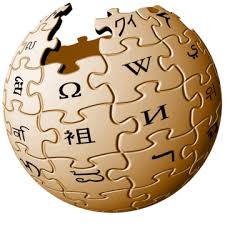
One of the crucial characteristics of P2P is equipotency of its participants, in consequence it is not exclusion but non-rivalry or even "anti-rivalry", with free-riders making positive contributions to production ("outriders"), what is essential (see previous post).
But exclusion is still present: Wikipedia, one of the mayor successes of peer-to-peer collaborative projects has included exclusionary policies, as Benkler (2006) already ascertained,
"(...) even Wikipedia includes, ultimately, a small number of people with system administrator privileges who can eliminate accounts or block users in the event that someone is being genuinely obstructionist. This technical fallback, however, appears only after substantial play has been given to self-policing by participants, and to informal and quasi-formal community based dispute resolution mechanisms." (p. 104).
And it is expanding: The expansion of exclusion in Wikipedia is what Bongwon Suh, Gregorio Convertino, Ed H. Chi, Peter Pirolli (2009)1, from the Palo Alto Research Center have found (they have an extremely recommended blog). They find what seems to be "evidence of growing resistance from the Wikipedia community to new content, especially when the edits come from occasional editors." (sc.5.3). This happens at the same time that Wikipedia growth rates have for first time started to decrease.
Source: Suh et al. (2009).
Is this slowdown due to the reducing number of contributors? or has the Wikipedia covered such an amount of information that it is increasingly difficult writing new articles?
Suh et al. (2009, 5.1.) argue that "(...) the population of Wikipedia editors is exhibiting a slowdown in its growth due to limited opportunities to make novel contributions." Indeed once an article has been written it might be improved, updated, rearranged, but it does not make much sense to write it again. As the article is improved there is less and less room for improvements. More individuals contributing to the same article result in decreasing marginal contributions and increasing overhead costs (see Suh et al., 2009, sc.6). This is interestingly similar to rivalry. As Benkler (2002, supra note 16) points out "While the reference to information as a public good is common, the reference to culture is not." Wikipedia´s articles are an embodiment of knowledge and culture around a specific topic and "Obviously, embodiments of culture, like a specific statue or building, are no more nonrival than embodiments of any other form of information, like a book or a corkscrew."
Wikipedia is then an antirival process but its product might become rival.
As the articles become rival, the condition for antirivalry production becomes more relevant: the rate of contributors over free riders increases, until there is no antirivalry any more.
"(...) article growth reached a peak in 2007-2008 and has been on the decline since then [Figure 5]. This result is consistent with a growth processes that hits a constraint – for instance, due to resource limitations in biological systems. Microbes grown in culture will eventually stop duplicating when nutrients run out."
Total percentage of edits reverted are on the y-axis, the figure (11) shows how the "disparity of treatment of new edits from editors of different classes has been widening steadily over the years at the expense of low-frequency editors. [1-9 edits per month]".
Source: Suh et al. (2009).
Knowledge requirements to make contributions becomes increasingly demanding and by analogy to Darwin, Suh et al. (2009, p.1) suggest that "(...) growth becomes increasingly constrained and limited, and under those conditions there will be increased evidence of competition and dominance."
This problematic poses a threat on the project,
"If a project cannot defend itself from incompetent or malicious contributions and integrate the competent modules into a finished product at sufficiently low cost, integration will either fail or the integrator will be forced to appropriate the residual value of the common project—usually leading to a dissipation of the motivations to contribute ex ante." Benkler (2002, 379)
However antirivalry might remain at three different levels of the process: first, new "events in the world (...) create new possibilities for write-up"; second, in the creation of new rules "a greater proportion of the overall edits is being devoted to overhead activities such as coordination, policy setting, and governance", these are also contributions to the growth of Wikipedia: it creates the coordination mechanism. Third and last, any contribution has a signalling effect pointing to deficiencies, needs of new topics to be covered, or non-solved conflicts.
The issue is relevant because differently from Suh et al. (2009), the objective here is not technological singularity, the objective here is how the shift in the growth pattern affects the idea of Wikipedia as a peer-to-peer production process.
And what is the importance of antirivalry? Can there be equipotency in the presence of exclusion?
Non-rivalry is a necessary condition for equipotency, but it is not a sufficient condition. Antirivalry implies that any agent by the mere consumption of the peer-produced goods is also collaborating in its production. Thereby antirivalry is a sufficient condition for equipotency.
Is this the underlying core characteristic of peer-to-peer?
Reposted at the P2PFOUNDATION
Bibliography:
Benkler, Y.; "Coase's Penguin, or, Linux and the Nature of the Firm." (2002).
Benkler, Y.; "The Wealth of Networks" (2006).
------------------







Muy buenooo!!!
ResponderEliminar